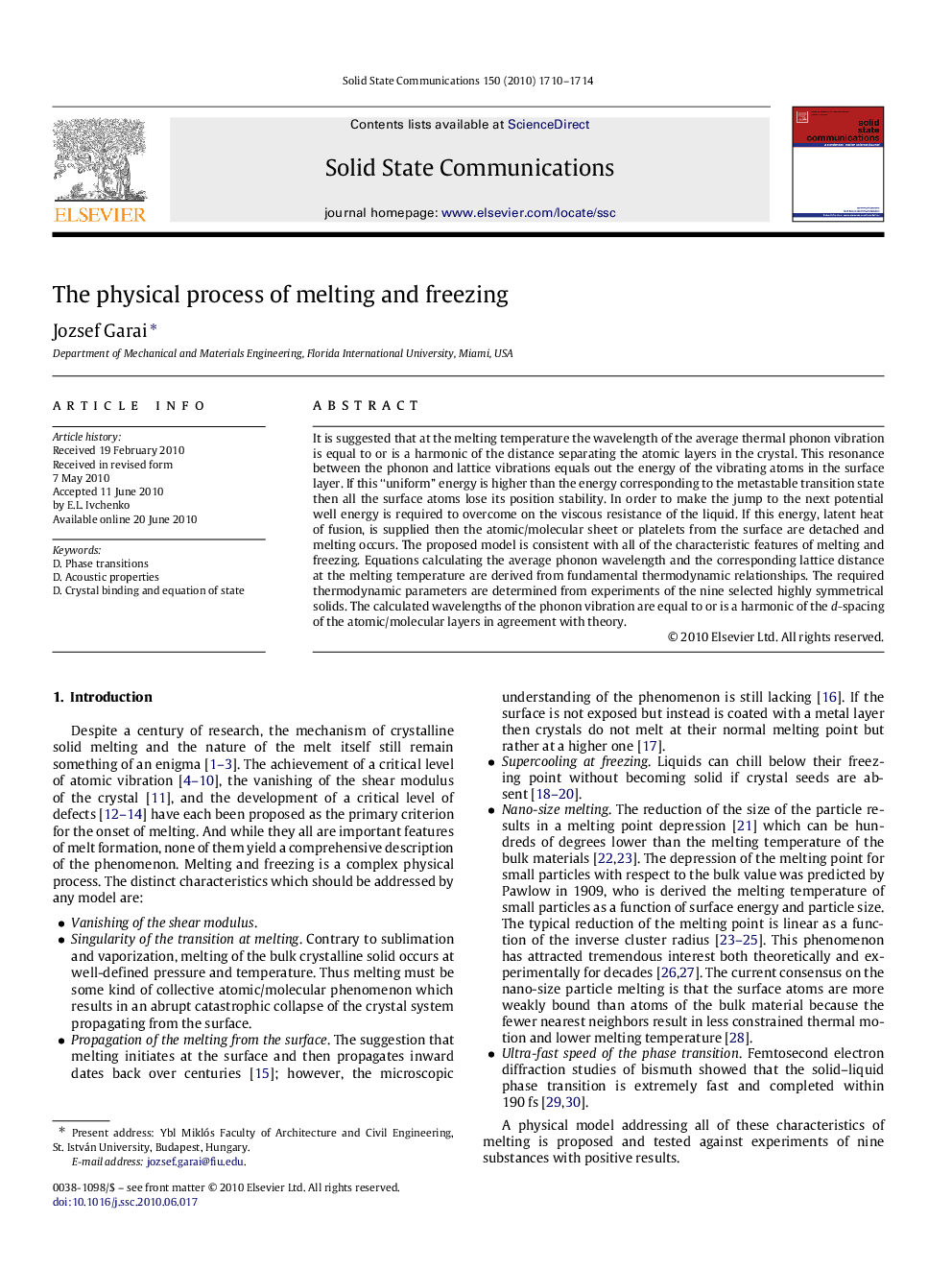| Article ID | Journal | Published Year | Pages | File Type |
|---|---|---|---|---|
| 1594411 | Solid State Communications | 2010 | 5 Pages |
It is suggested that at the melting temperature the wavelength of the average thermal phonon vibration is equal to or is a harmonic of the distance separating the atomic layers in the crystal. This resonance between the phonon and lattice vibrations equals out the energy of the vibrating atoms in the surface layer. If this “uniform” energy is higher than the energy corresponding to the metastable transition state then all the surface atoms lose its position stability. In order to make the jump to the next potential well energy is required to overcome on the viscous resistance of the liquid. If this energy, latent heat of fusion, is supplied then the atomic/molecular sheet or platelets from the surface are detached and melting occurs. The proposed model is consistent with all of the characteristic features of melting and freezing. Equations calculating the average phonon wavelength and the corresponding lattice distance at the melting temperature are derived from fundamental thermodynamic relationships. The required thermodynamic parameters are determined from experiments of the nine selected highly symmetrical solids. The calculated wavelengths of the phonon vibration are equal to or is a harmonic of the dd-spacing of the atomic/molecular layers in agreement with theory.
